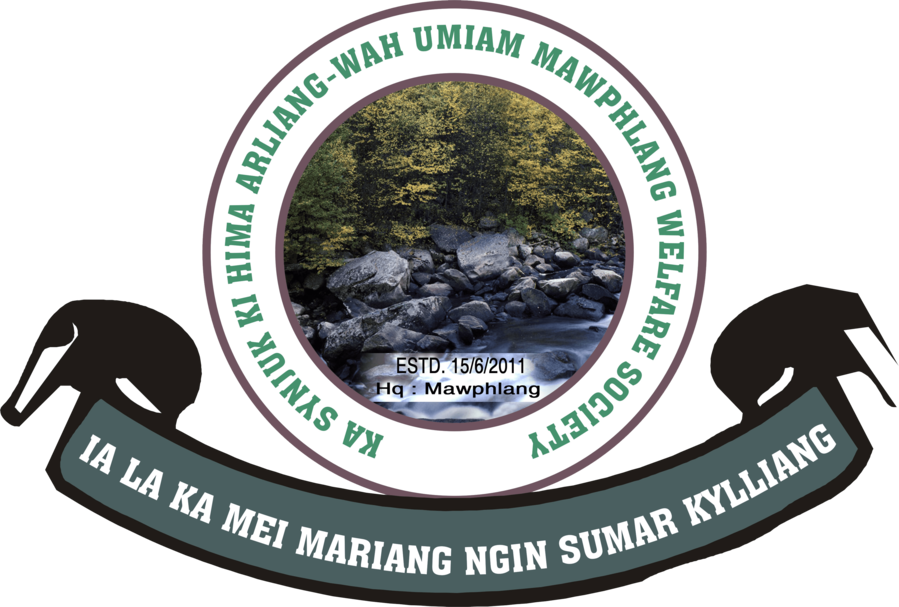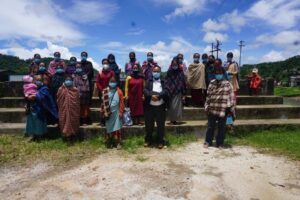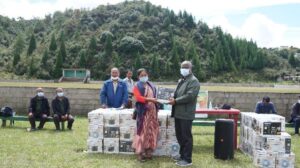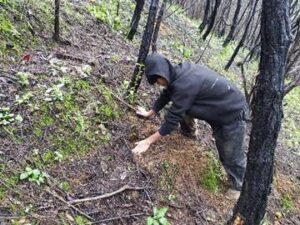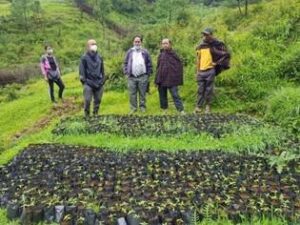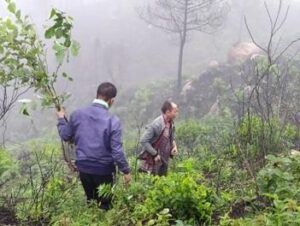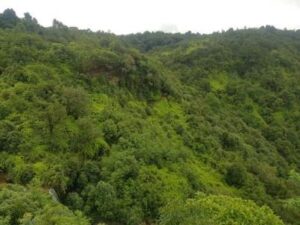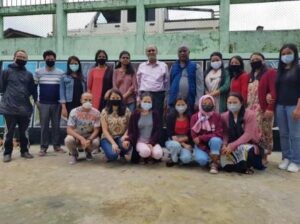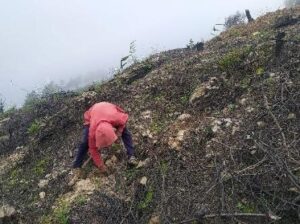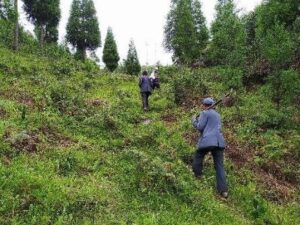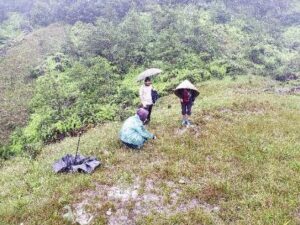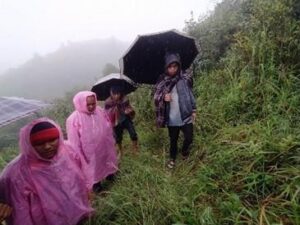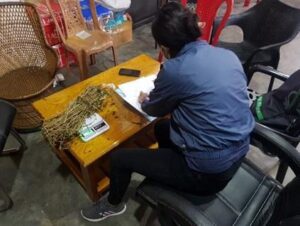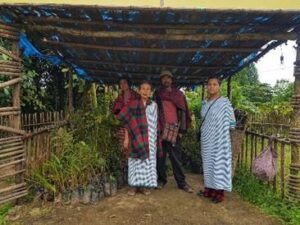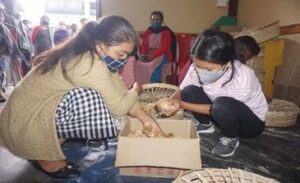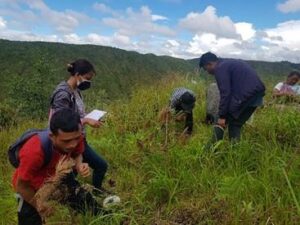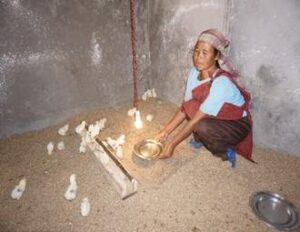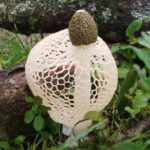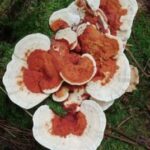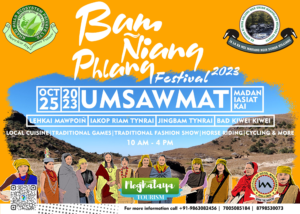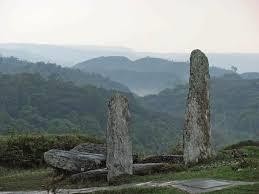
KHASI HILLS COMMUNITY PROJECT
3rd Quarter Report Jul-Sep 2021
PROJECT SUMMARY
The Khasi Hills Community Project has completed 10 years of successful operation. The project has mobilized approximately 7,250 families to protect and restore 2,847 hectares of old-growth, montane cloud forests in the Umiam River Watershed. In addition, project communities are working to regenerate nearly 9,000 hectares of degraded forest. In return for their efforts to save their community forests from logging, forest fires, mining, and conversion to agriculture, the project provides communities with a diverse set of social and economic activities. The project is reaching its goal of increasing household income as new village surveys show that 70 percent of the families are below India’s poverty line, compared to earlier numbers of 90 percent. The project also seeks to improve public health through the provision of clean drinking water systems and smokeless cooking technologies, such as LPG and rice cookers, to reduce household air pollution.
Response to COVID-19 Global Pandemic
The COVID-19 pandemic second wave has now lessened, and restrictions have been lifted. Vaccination drives continue to be held throughout the state and second doses are now getting to people. During the third quarter of 2021, new daily covid cases in the state started to decline and are presently between 30-50 per day. Community Facilitators (CFs) and Youth Volunteers have continued with forest patrols, monitoring, and distribution in most areas. The team is in good communication with CFs prior to site visits to ensure the areas are safe and prepared. The project continues to distribute masks and practice distancing in efforts to reduce the spread of COVID-19.
Forest Habitat and Wildlife Conservation
Conserving the montane cloud forests along the steep banks of the Umiam River is a major goal of the project. The dense forests drop over 500 meters to the rushing waters of the river which subsequently flows into Bangladesh. The historic David Scott Trail constructed in the early 19th century, winds its way up the river gorge and has become a popular hiking route and tourist destination. Forest conservation is complemented by community efforts to restore forest fragments on the hill tops above the river, creating a wildlife corridor that extends from the 2,000-meter plateau down to the Bangladesh plains. This habitat supports a broad range of birdlife, reptiles, and mammals, as well as amphibians, fish, and orchids, some of which are found only in this area.
Awareness programmes continue to be held in new villages on a regular basis. During these programmes, the socio-economic team, forestry team and project director speak on the project activities and the benefits provided toward communities for conservation of forests and habitats. The village Headman and the Hima Community Facilitators often lead the discussion and provide a platform for the project to communicate with community members.
An important project strategy to reduce deforestation and forest degradation is community- based forest fire control. The project has continued to train local Community Facilitators in monitoring the production, transport, and use of charcoal within the project area. This third quarter is characterized by the end of the monsoon and the beginning of the dry season.
Degraded Forest Restoration
With nearly 9,000 hectares of degraded forest land, the project seeks to restore these areas to improve wildlife habitat, increase the hydrological function of the watershed, and sequester atmospheric carbon. Each participating village identifies the degraded community forests that they want to restore and agrees to close the land to firewood collection, grazing, and agriculture. The villages receive support from the project to clear fire lines, remove weeds and scrub, and open space for emerging saplings. Gaps are filled with native seedlings and saplings. Currently there are over 1,580 hectares being actively restored with Assisted Natural Regeneration (ANR) treatment. Villages are finding that restoring the watershed is resulting in better stream flow levels, as well as water availability in the dry season. In 2021, over 61,000 saplings (including nearly 6,000 saplings transplanted from forests) were planted by community members, youth volunteers, SHGs, and CFs in ANR areas, community forests, and land affected by forest fire.
Clean Energy Transition
Household firewood consumption for cooking and heating is a major driver of deforestation in the project area as well as contributing to indoor smoke pollution that causes respiratory illness. In addition, fuelwood burning also is a major source of carbon emissions. To address these problems, the project is working to supply all project families with LPG cooktops, LPG cylinders, and electric rice cookers. Previous surveys by the team found that adoption of gas cooktops has reduced firewood consumption an average of 2.5 kgs of fuelwood per day for each household. Fuelwood continues to be monitored by Youth Volunteers in the communities.
To get a better understanding of how families use fuel currently, including fuelwood and charcoal, the project is conducting ongoing surveys (last completed in April) based on fuel needs and current arrangements. Through the surveys, the team found that those who had used the LPG found it to beneficial in cooking time and ease. However, one of the challenges is the distance and cost of refilling the cylinder. The surveys will also provide information on which families are already implementing LPG and which would like to do so in the future. During this quarter, the team focused on rice cooker distribution.
Sustainable Agriculture
With most families dependent on farming for their income, improving agricultural practices has been a project priority. The project team seeks to assist families from a heavy dependence on low value potato cultivation to diversify into horticulture, polyhouse vegetable growing, and organic farming. After the project distributed polyhouses and shade nets, village families have been able to start cultivating a number of vegetables like mustard leaves, strawberries, and tomatoes to generate income. SHGs are also involved with vermicomposting to increase value-added products to their marketable goods and for use in their own agricultural practices. During this quarter, beneficiaries who were selected to be part of the Rural Backyard Goat and Piggery Scheme through the Directorate of Health of Animal Husbandry, Meghalaya were visited to assess their experience and the condition of the sheds and stalls which have been prepared for the animals.
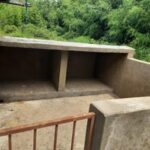
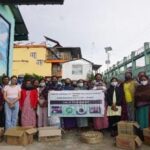
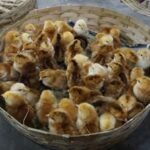
Eco-Tourism and Cultural Conservation
During the 3rd quarter, eco-tourism sites began to open again to local tourists in the area after the Covid lockdown. Guides have been eager to share the cultural beauty with others once again and rely on this for their livelihood. Thirteen communities have been using Eco-tourism grants to build better facilities, hiking trails, and viewpoints during the lockdown in anticipation of future visitors. During this quarter Participatory 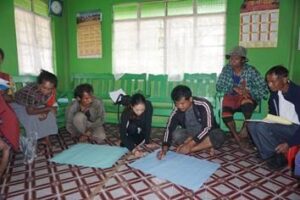 Rural Appraisals (PRAs) were conducted with key people of the villages to gather information of the village through social mapping, resource mapping, and Venn diagrams.
Rural Appraisals (PRAs) were conducted with key people of the villages to gather information of the village through social mapping, resource mapping, and Venn diagrams.
Community Horticulture
As part of the project’s sustainable agriculture program which includes organic farming techniques, vermiculture, and composting the project team is also providing high value fruit trees such as peach, plum, pear, apple, and pomegranates to project families. This helps diversify farm produce, especially low value, high input potato farming on which many families depend. Fruit trees also provide produce that can be converted to value-added jams and jellies. The fruit trees are found to have a high survival rate when protected from grazing animals. During this quarter, fruit trees continue to be planted with sufficient moisture and monitored by the Community Facilitators. 500 local chestnut saplings were planted in one community to increase tree cover and provide income.
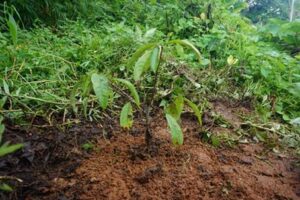
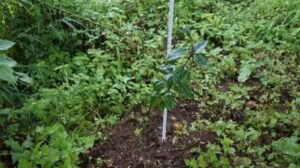
Additionally, project sponsored polyhouses and shade nets have provided shelter to produce ornamental flowers and bedding plants, like Alstroemeria, which have a good market in Meghalaya.
Mushroom Cultivation
The project continues to oversee a mushroom cultivation programme and has been expanding this high value production system given the conducive moist, high elevation environment. Oyster mushrooms bring in a good return for local families once the mushroom house has been constructed. During August, the project distributed mushroom spawn to beneficiaries including SHGs. Beneficiaries are able to sell the harvested mushrooms for Rs. 300/kg.
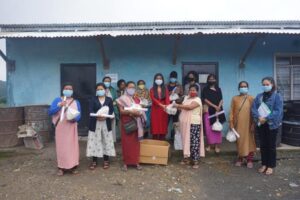
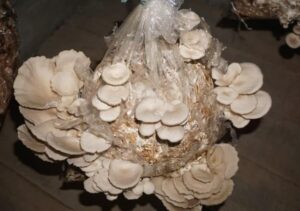
SHG FEDERATION
The project is currently in the process of forming an SHG Federation to improve and overcome the inherent limitations of small and informal groups, like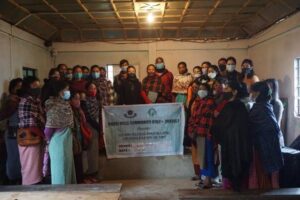 limited resources, capacity, negotiation and bargaining powers and an inability to deal with the outside world such as Government, mainstream institutions, and markets. The project team has been organizing several awareness programmes about the Federation of SHGs. Lady Community Facilitators are also spreading awareness about the SHG Federation while meeting with SHGs in their respective Hima.
limited resources, capacity, negotiation and bargaining powers and an inability to deal with the outside world such as Government, mainstream institutions, and markets. The project team has been organizing several awareness programmes about the Federation of SHGs. Lady Community Facilitators are also spreading awareness about the SHG Federation while meeting with SHGs in their respective Hima.
Community Development Grants
Each year the project provides the participating communities with community development grants (CDG) to fund projects that benefit many village families. 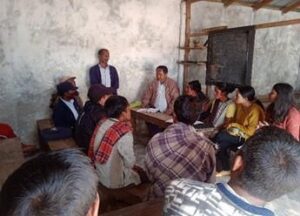
The villages prepare proposals for priority projects. Most communities use the funds for sanitation, water projects, and school upkeep. Lower Working Committees continue to meet, prepare village management plans, discuss finances, and oversee the implementation of grant-funded projects.
Project Updates
- July 2021
- August 2021
- September 2021
1 and 7 July 2021
Monitoring of the tree plantation at Lumlaitsohphoh, Hima Mawphlang took place. Approximately 1000 saplings were planted with the help of the CF, Asst. CF and Local Youth Volunteers of Hima Mawphlang.
2 and 6 July 2021
The Forestry Team monitored the Home-based Nurseries (HBNs) at Lawshlem, Kyndong Laitmawbah, Nongmadan, and Perkseh villages. The HBNs have about 1000 saplings each with about 4 species.
2 July 2021
Monitoring of the tree plantation at Lumdiron, Hima Pamsanngut took place along with the CF of Hima Pamsanngut. A total of 650 trees were planted in the area.
14 July 2021
The team visited Mawkma village, the site is proposed for an orchid garden.
21 July 2021
The Director of ICAR visited the Project. He put forth an avenue for the Project to avail various schemes from the institute in the coming months.
22 July 2021
The Forestry Team monitored the tree plantation at Laitsohpliah, Hima Sohra along with the Sordar of Laitsohpliah, CF, Asst. CF, and Youth Volunteer of Hima Sohra. 300 tree saplings were planted.
23 July 2021
The Forestry Team monitored the tree plantation at Lumdiengsai, Lumkyntung, Hima Laitkroh along with the CF, Local Youth Volunteers, and villagers under Hima Laitkroh. A total of 2200 tree sapling were transplanted from the forest.
30 July 2021
The tree plantation at Lumwaharkum, Hima Nonglwai was monitored along with the CF of Hima Nonglwai. 217 tree saplings were planted.
19 August 2021
The Forestry Team conducted a small training program on Estimation of Scrubland Biomass to the CFs of Hima Mylliem, Hima Pamsanngut, Hima Nonglwai, and CF and Asst. CF of Hima Lyngiong and Hima Mawphlang at Phodumblang, Kyrphei of Hima Mylliem.
20 August 2021
The Forestry Team started the scrubland estimation by drying and calculating biomass.
19-31 August 2021
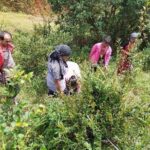
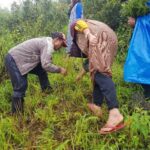
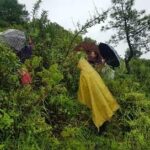
The team conducted scrubland estimation by laying down plots and taking measurements in Laitkynsew, Diekynthong, Kyrphei, Mawmyrsiang, Lawsubah, and Lumshnong Mawsawrit.
31 August 2021
The Project gave the herbal pratitioners of Hima Sohra and Laitkroh medicinal herb seedlings which were obtained from the Forest Department at Sohra subdivision.
14 September 2021
The Socio-economic Team distributed 800 chicks to 31 beneficiaries including 6 SHGs. The project provides these chicks to beneficiaries in order to uplift the economic status of the beneficiaries and to reduce the pressure on forests.
September 2021
The team monitored the herbal gardens of Pyrda village. Two nurseries are well maintained and have low mortality.
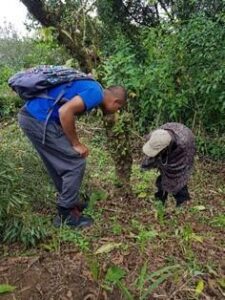
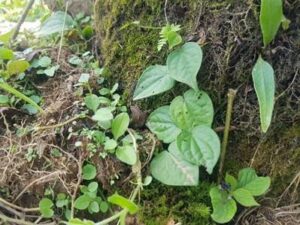
22 &25 September 2021
The Forestry monitored the carbon plots at Dymmiewblah, Lumkor- rim, Kyiem, Lumkmie Brial, Mawmyrsiang, and Lumlaitsohphoh Hima Mawphlang.
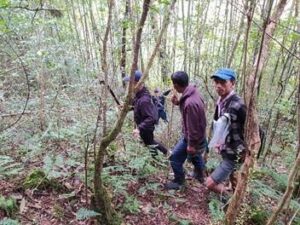
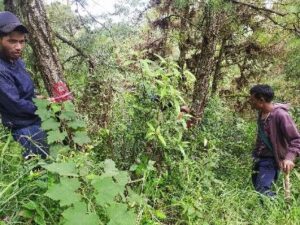
September 2021
The Forestry Team continued to conduct scrubland estimation throughout 13 villages.
September 2021
The Socio-economic Team monitored layer chicks and administered the IBD and LaSota vaccines to the chicks which had been distributed in August 2021.
Biodiversity Monitoring
During the 3rd quarter of 2021, two Rhesus macaques were rescued, one male and one female. Rare bamboo orchids (Arundina graminifolia) were identified in Hima Mylliem by the female youth volunteers. Giant centipede and mushroom siting were also recorded by CFs during this quarter.
